Cassette -type suspended ceilings can be safely attributed to the better version of the ceiling ...
|
|
Parquet is the most expensive and noble flooring. But even the most ... |
Being an obligatory element of any interior, interior doors do not ... |
How to calculate the number of home heating radiators
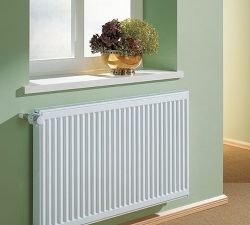
Before starting the heating season, the problem of good and high -quality heating of the home is acutely arose. Especially if repairs are carried out and batteries are changing. The assortment of heating equipment is quite rich. Batteries are offered different capacities and types of execution. Therefore, you need to know the features of each species in order to correctly choose the number of sections and the type of radiator.
Table of contents
- What is heating radiators and which one is worth choosing?
- Necessary values \u200b\u200bfor calculating the number of heating radiators
- How many heating radiators are needed?
- Calculation of the required power for radiators
What is heating radiators and which one is worth choosing?
The radiator is a heating device consisting of separate sections that are interconnected by pipes. The coolant circulates along them, which most often is a simple water heated to the required temperature. First of all, radiators are used for heating residential premises. There are several types of radiators, and it is difficult to highlight the best or worst. Each variety has its own advantages, which mainly represents the material from which the heating device is made.
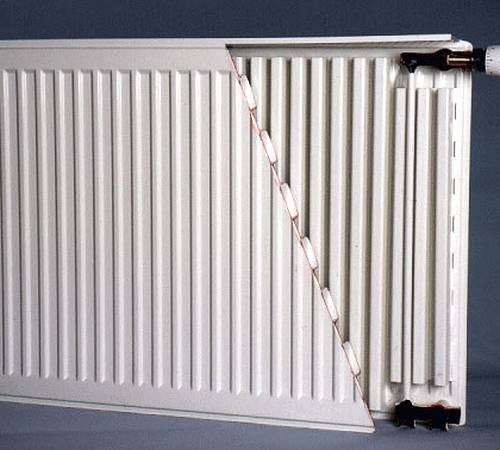
- Cast iron radiators. Despite some criticism of them and unreasonable allegations that cast iron has a weaker thermal conductivity than other varieties - this is not entirely true. Modern cast iron radiators have high thermal capacity and compactness. In addition, they are characterized by other advantages:
- A large mass is a disadvantage during transportation and delivery, but the weight leads to greater heat capacity and thermal inertia.
- In the event that in the house there are changes in the temperature of the coolant in the heating system, cast -iron radiators better hold heat level due to inertia.
- Cast iron is weakly susceptible to the quality and level of clogging of water and its overheating.
- The durability of cast -iron batteries surpasses all analogues. In some houses, the old batteries of Soviet times are still observed.
Of the shortcomings of cast iron, it is important to know about the following:
- the great weight provides a certain inconvenience in servicing and installing batteries, and also requires reliable installation fasteners,
- cast iron periodically needs painting,
- since the internal channels have a rough structure, a plaque appears on them over time, which leads to a drop in heat transfer,
- cast iron requires a higher temperature for heating and in the case of weak supply or insufficient temperature of the heated water, the batteries worse the room.
Another disadvantage that is worth highlighted separately is the tendency to destroy the gaskets between the sections. This is manifested according to experts only after 40 years of operation, which in turn once again emphasizes one of the advantages of cast -iron radiators - their durability.
- Aluminum batteries are considered the best choice, as they have high thermal conductivity in combination with a larger area of \u200b\u200bthe radiator surface due to protrusions and ribs. The following are distinguished as their advantages:
- small weight,
- simplicity in installation,
- high working pressure,
- small dimensions of the radiator,
- high degree of heat transfer.
The disadvantages of aluminum radiators include their sensitivity to clogging and corrosion of metal in water, especially if small wandering currents affect the battery. This is fraught with increasing pressure, which can lead to a rupture of the heating battery.
To exclude the risk, the inside of the battery is covered with a polymer layer that can protect aluminum from direct contact with water. In the same case, if the battery does not have an inner layer, it is extremely recommended that the taps with water in pipes are not recommended, since this can cause a structure rupture.
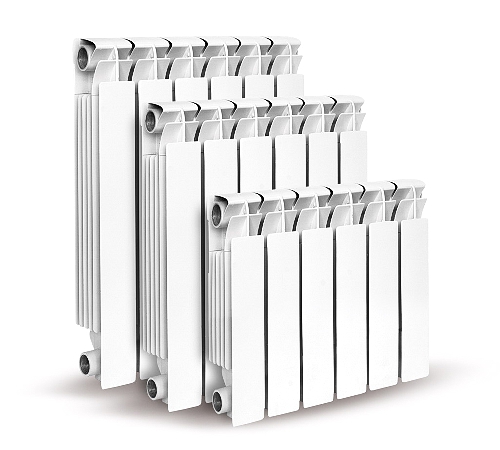
- A good choice will be the purchase of a bimetallic radiator consisting of aluminum and steel alloys. Such models have all the advantages of aluminum, while the disadvantages and danger of the gap are eliminated. It should be borne in mind that their price is respectively higher.
- Steel radiators are produced by various form factors, which will allow you to choose a device of any power. They have the following shortcomings:
- low working pressure, as a rule, a component of only up to 7 atm,
- the maximum temperature of the coolant should not exceed 100C,
- lack of corrosion protection,
- weak thermal inertia,
- sensitivity to operating temperatures and hydraulic impacts.
Steel radiators are characterized by a large area of \u200b\u200bthe heating surface, which stimulates the movement of heated air. This variety of radiators is more advisable to attribute to convectors. Since the steel heater has more disadvantages than advantages - if you want to buy a radiator of this type, it is worth first to pay attention to bimetallic structures or to cast -iron batteries.
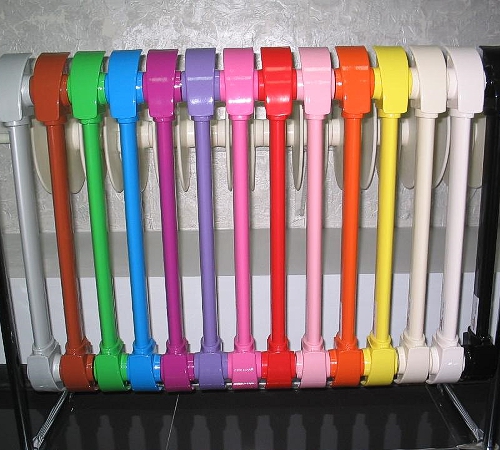
- The last variety is oil radiators. Unlike other models, oils are the devices independent of the general central heating system and are more often acquired as an additional mobile heating device. As a rule, it reaches the maximum heating power 30 minutes after heating, and in general, they are a very useful device, especially relevant in country houses.
When choosing a radiator, it is important to pay attention to their service life and operating conditions. There is no need to save and buy cheap models of aluminum radiators without polymer coating, since they are very susceptible to corrosion. In fact, a cast-iron radiator is still the most preferred option. Sellers strive to impose the purchase of aluminum structures, focusing that cast iron is outdated - however, this is not so. If you compare numerous reviews on the types of batteries, it is cast-iron heating batteries that remain the most correct investment. This does not mean that it is worth preserving the adherence to the old ribbed models of the MS-140 of the era of the country of Soviets. To date, a significant assortment of compact cast -iron radiators is offered on the market. The initial price of one section of the cast -iron battery starts at $ 7. For lovers of aesthetics, radiators are available on sale, which are whole artistic compositions, but their price is much higher.
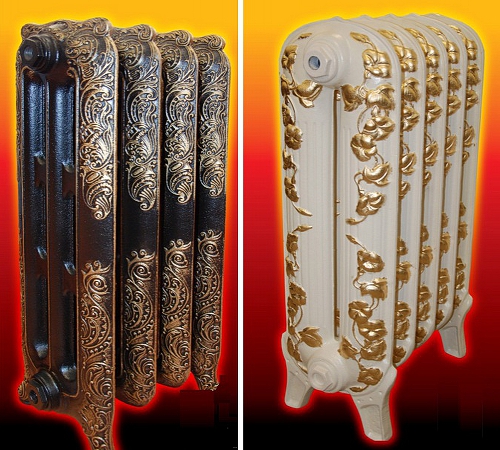
Necessary values \u200b\u200bfor calculating the number of heating radiators
Before proceeding with the calculation, you need to know the basic coeffcents that are used to determine the required power.
Glazing: (K1)
- triple energy -saving double -glazed window \u003d 0.85
- double energy -saving \u003d 1.0
- simple double -glazed window \u003d 1.3
Thermal insulation: (K2)
- concrete slab with a layer of polystyrene foam with a thickness of 10 cm \u003d 0.85
- brick wall with two brick thickness \u003d 1.0
- ordinary concrete panel - 1.3
Attitude to the Square of Windows: (K3)
- 10% = 0,8
- 20% = 0,9
- 30% = 1,0
- 40% \u003d 1.1, etc.
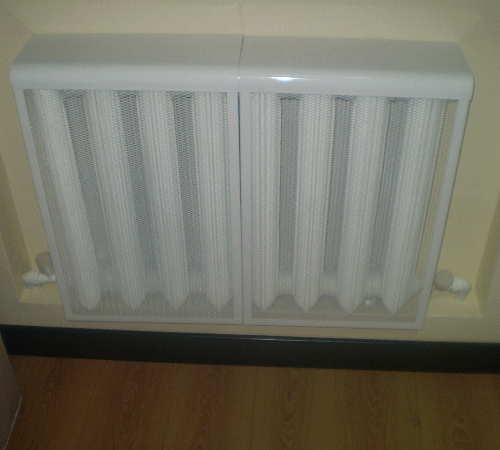
Minimum temperature outside the room: (K4)
- - 10s \u003d 0.7
- - 15s \u003d 0.9
- - 20s \u003d 1.1
- - 25s \u003d 1.3
The height of the ceilings of the room: (K5)
- 2.5 m, which is a typical apartment \u003d 1.0
- 3 m \u003d 1.05
- 3.5m \u003d 1.1
- 4 m \u003d 1.15
The coefficient of the heated room \u003d 0.8 (K6)
Number of walls: (K7)
- one wall \u003d 1.1
- corner apartment with two walls \u003d 1.2
- three walls \u003d 1.3
- a separate house with four walls \u003d 1.4
Now, in order to determine the power of radiators, you need to change the power indicator to the area of \u200b\u200bthe room and to the coefficients according to this formula: 100 W/m2*Loose*K1*K2*K3*K4*K5*K6*K7
There are many calculation methods from which it is worth choosing a more convenient one. We will talk about them further.
How many heating radiators are needed?
There are several methods of how to calculate the radiators: their number and power. The basis is the general principle of averaging the power of one section and taking into account the reserve, which is 20%
- the first method is standard, and allows you to calculate the area. For example, according to construction standards for heating one square meter of area, 100 watts of power is needed. If the room has an area of \u200b\u200b20 m, and the average power of one section is 170 watts, then the calculation will have the same type:
20*100/170 = 11,76
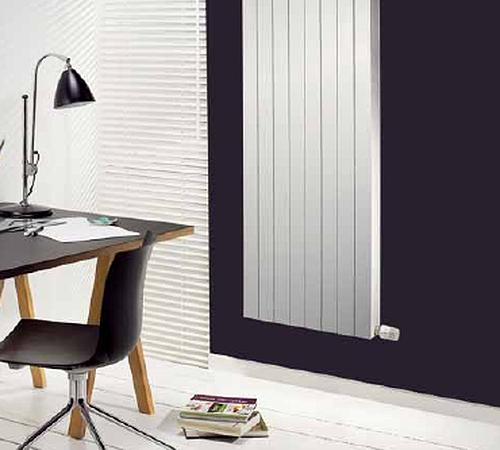
The resulting value must be rounded up, so for heating one room you will need a battery with 12 sections of the radiator with a capacity of 170 watts.
- the approximate calculation method will make it possible to determine the required number of sections based on the area of \u200b\u200bthe room and the height of the ceilings. In this case, if we take as a basis the heating indicator of one section of 1.8 m and the height of the ceiling of 2.5 m, then with the same room size calculation 20/1,8 = 11,11. Walking through this indicator in the most way, we get 12 sections of the battery. It should be noted that this method has a greater error, so it is not always advisable to use it.
- the third method is based on calculating the volume of the room. For example, the room has 5 m in length, 3.5 in width, and the height of the ceilings is 2.5 m. Taking as a basis the fact that a 5 m3 heating requires one section with a thermal power of 200 watts, we get the following formula:
(5*3,5*2,5)/5 = 8,75
We re -round again and get that for heating the room you need 9 sections of 200 watts each, or 11 sections of 170 watts.
It is important to remember that these methods have an error, so it is better to set the number of batteries for one larger. In addition, construction standards suggest minimal indicators of the temperature in the room. If you need to create a hot microclimate, then at least five are recommended to the resulting number of sections.
Calculation of the required power for radiators
To calculate the required radiator power is also not difficult. To do this, it makes sense to make the following calculations:
- the volume of the room is determined. For example, an area of \u200b\u200b20 m and ceiling height 2.5 m:
20*2.5 \u003d 50 m3,
- next, take the climatic coefficient. For the territory of the central part of Russia, the generally accepted value of this coefficient is 41 watts per m3:
50*41 \u003d 2050 watts
After increasing the indicator in the larger direction, the required value of the radiator power is obtained in 2100 watts. For cold winter conditions with an air temperature below -20s, it makes sense to additionally take into account the power supply, equal to 20%. In this case, the required power will be 2460 watts. The equipment of such thermal power should be sought in stores.
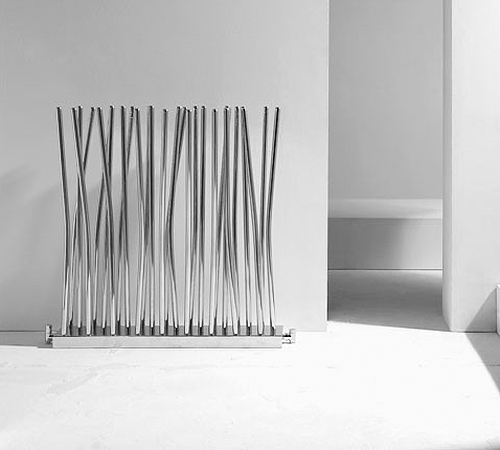
Heating radiators can be correctly calculated with the help of a second example of the calculation based on the area of \u200b\u200bthe room and the coefficient for the number of walls. For example, one room with an area of \u200b\u200b20 m and one outer wall is taken. In this case, the calculations have a similar type:
20*100*1.1 \u003d 2200 wattswhere 100 is standard thermal power. If we take the power of one section of the radiator in 170 watts, then the value of 12.94 is obtained - that is, 13 sections of 170 watts each need each.
It is important to pay attention to the fact that the heat transfer is often an excess of heat, so before buying a heating radiator it is necessary to study the technical passport in order to find out the minimum value of heat transfer.
As a rule, there is no need to calculate the area of \u200b\u200bthe radiator, the necessary power or thermal resistance is calculated, and then the suitable model is selected from the assortment offered by sellers. In the event that an accurate calculation is required, it will be more correct to turn to specialists, since you need knowledge of the parameters of the composition of the walls and their thickness, the ratio of the area of \u200b\u200bthe walls, windows and the climatic conditions of the terrain.

Dear manager
Dear procurement manager,
Good morning!
Hebe Topasia building materials Co., Ltd is a manufacturer that producing a cast iron radiator, a cast aluminum radiator, steel radiators, a bimetallic radiator, with 20 years'Experience, with high quality and a reasonable price.
If you have any postponed warrant or request, please do not hesitate to contact us.
Quote & Catalog will be sent upon request.
Your answer will be very grateful!
Best wishes,
Angela
Hebei Topasia Building Materials Co., Ltd
Tel: 0086-311-83071336
Mob / WhatsApp: 0086-15931080346
Skype: Angalatile
Mail: angel@topasia-bathroom.com